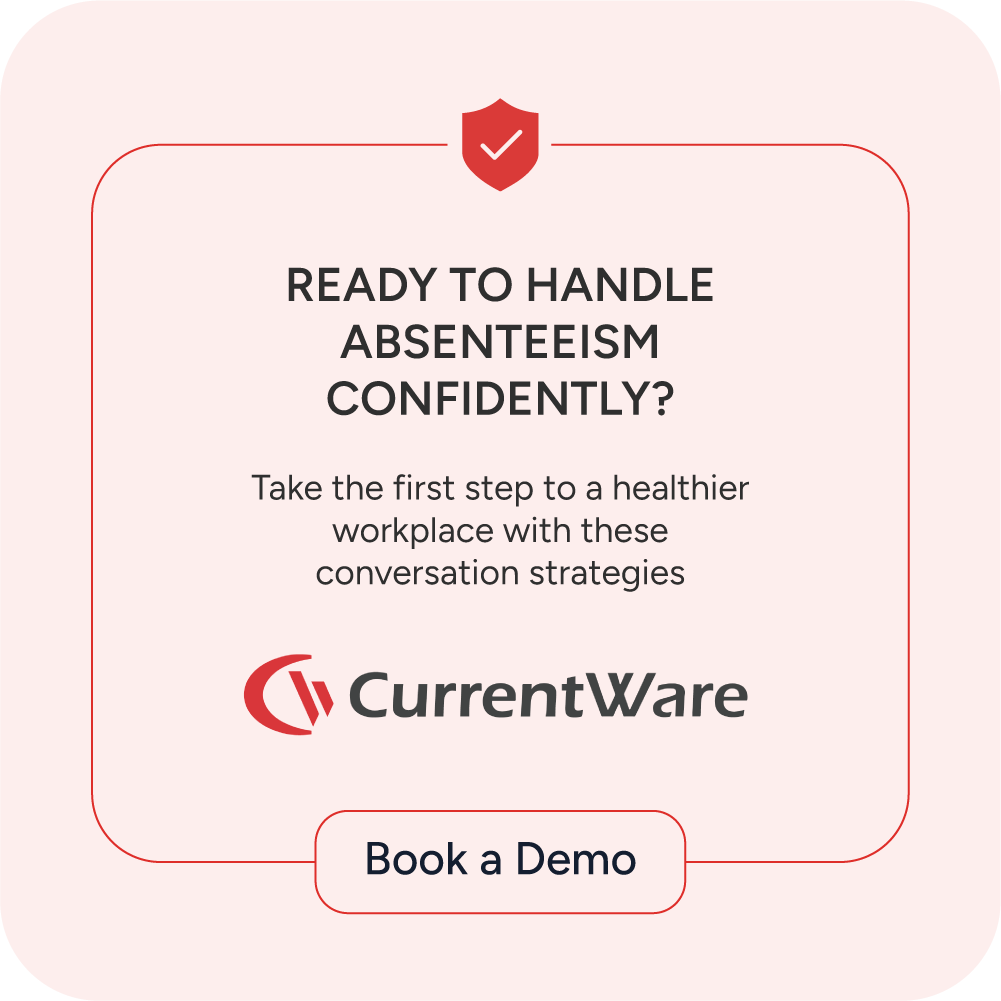How to Talk to an Employee About Excessive Absenteeism
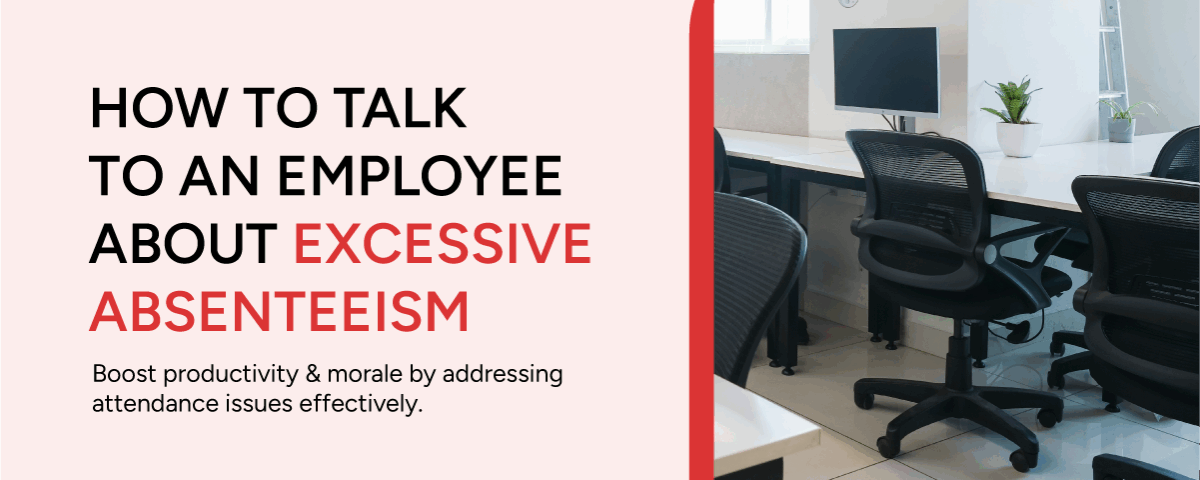
Table of contents
- Implement an Employee Attendance Policy
- Document Employee Absences
- Prepare for the Conversation
- Approach the Conversation with Empathy
- Discuss the Impact of Excessive Absenteeism
- Set Clear Expectations Moving Forward
- Document the Conversation
- Follow Up and Monitor Progress
- Frequently Asked Questions
- Conclusion
According to the CDC Foundation, productivity losses related to absenteeism costs employers $225.8 Billion each year, or $1,685 per employee. Excessive absenteeism in the workplace negatively affects workload distribution, team morale, and performance goals.
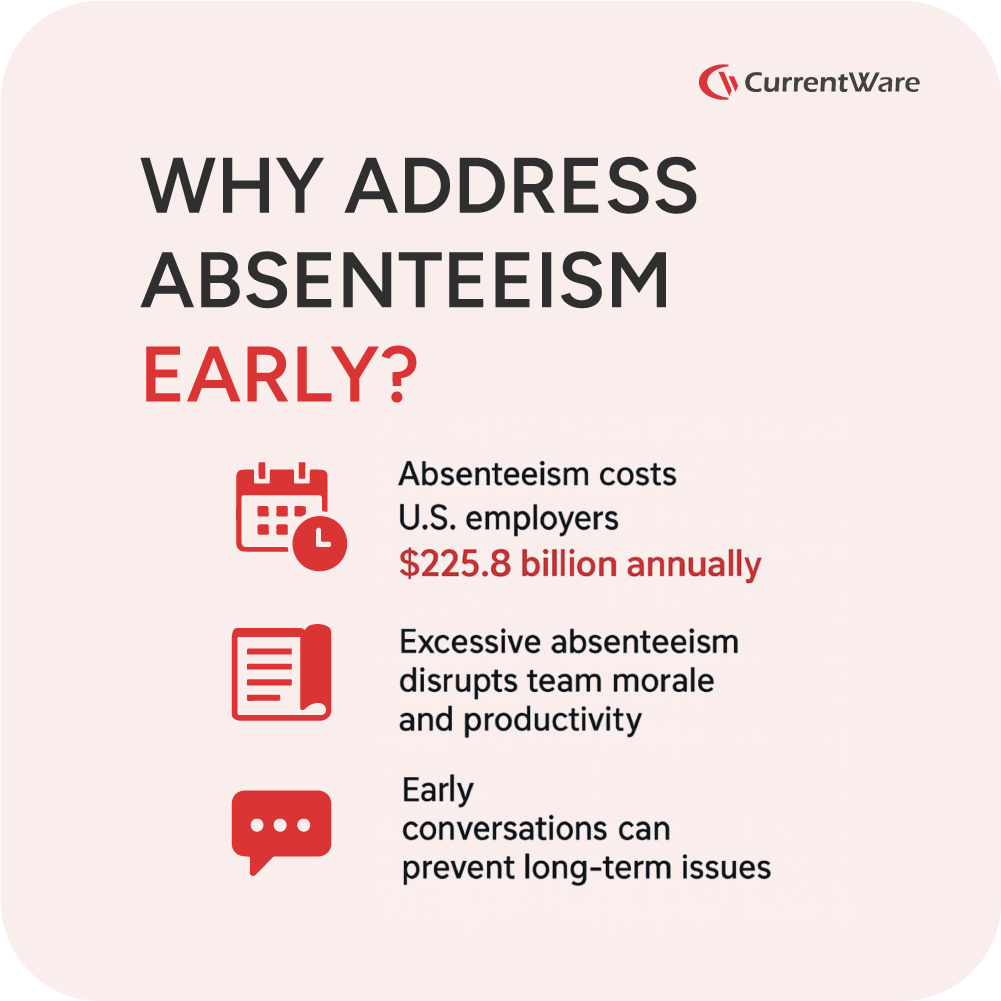
To minimize the negative impact of absenteeism, it’s crucial to talk to employees about excessive absenteeism as soon as possible. This ensures that your employee attendance policy is consistently enforced and that employees who are excessively absent are kept aware of your company’s attendance expectations.
In this article I will provide you with tips for addressing excessive absenteeism in the workplace. These tips will help you enforce attendance expectations in a way that is consistent with your employee attendance policy.
Implement an Employee Attendance Policy
Ensure that your company has an employee attendance policy in place. This document is essential for communicating attendance expectations, outlining what absences are acceptable, and providing employees with processes for reporting absences. Having a formal policy ensures that employee attendance management processes are fair and consistent.
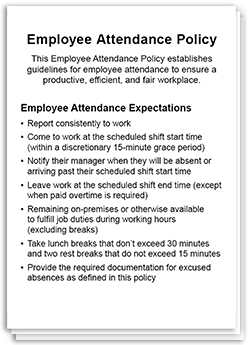
Get Your Free Employee Attendance Policy Template
- Set expectations for employee attendance
- Define excused vs unexcused absences
- Set a precedent for correcting attendance concerns
Get started today—Download the FREE template and customize it to fit the needs of your organization.
Document Employee Absences
As absences occur, ensure they are documented in accordance with your employee attendance policy. Having proper documentation of unexcused absences such as no-call-no-shows will help to keep the conversation fair and objective.
Leading up to the conversation, it’s important that you review the official attendance policy and understand what qualifies as excessive absenteeism. Having a clear definition ensures that all employee attendance concerns are handled consistently.
Prepare for the Conversation
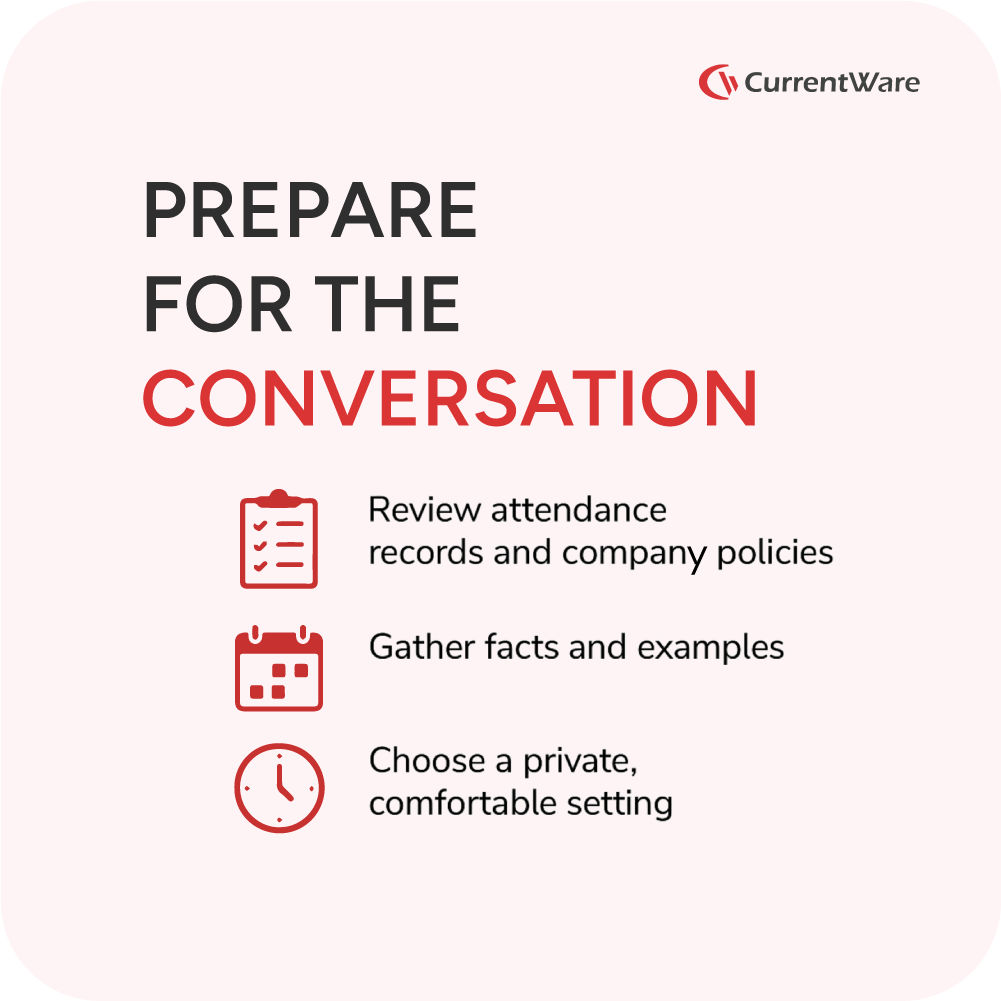
To prepare for a conversation with an employee about excessive absenteeism, follow a structured, empathetic, and fact-based approach to ensure the discussion is productive, fair, and compliant with your organization’s policies.
- Choose the Right Time and Setting: Schedule a private meeting to maintain confidentiality and avoid embarrassment.
- Coordinate With HR: Coordinate with an HR representative to ensure compliance with legal requirements (such as FMLA or ADA), to avoid impermissible questions, and to discuss possible accommodations if needed.
- Have Documentation Ready: Collect detailed records of the employee’s absences, including dates, reasons (if provided), and any prior discussions or warnings.
- Be Clear About Objectives: Your goal is to understand the issue, support the employee, outline expectations, and fairly enforce your attendance policy.
Approach the Conversation with Empathy
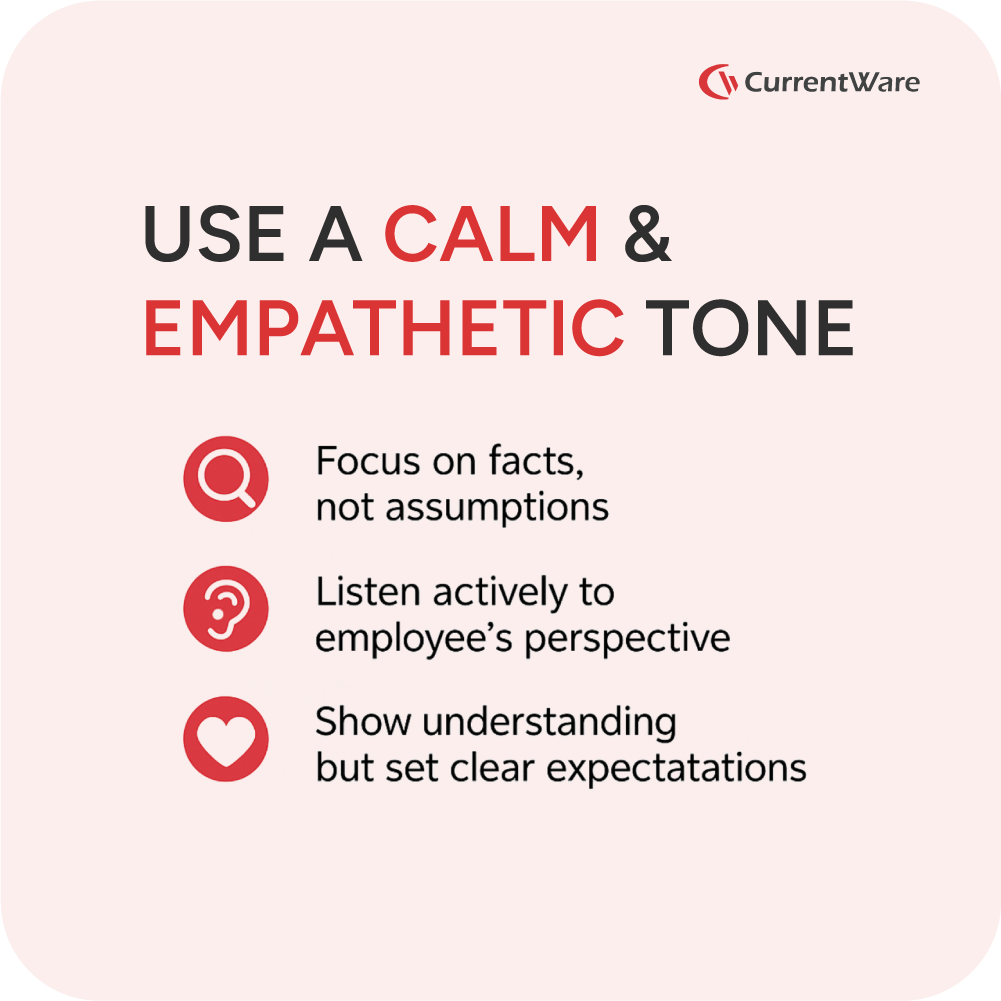
Be ready to listen actively and show empathy. Prepare open-ended questions to explore the underlying cause of the absences—such as health, transportation, caregiving, or potential workplace issues—rather than making assumptions about intent.
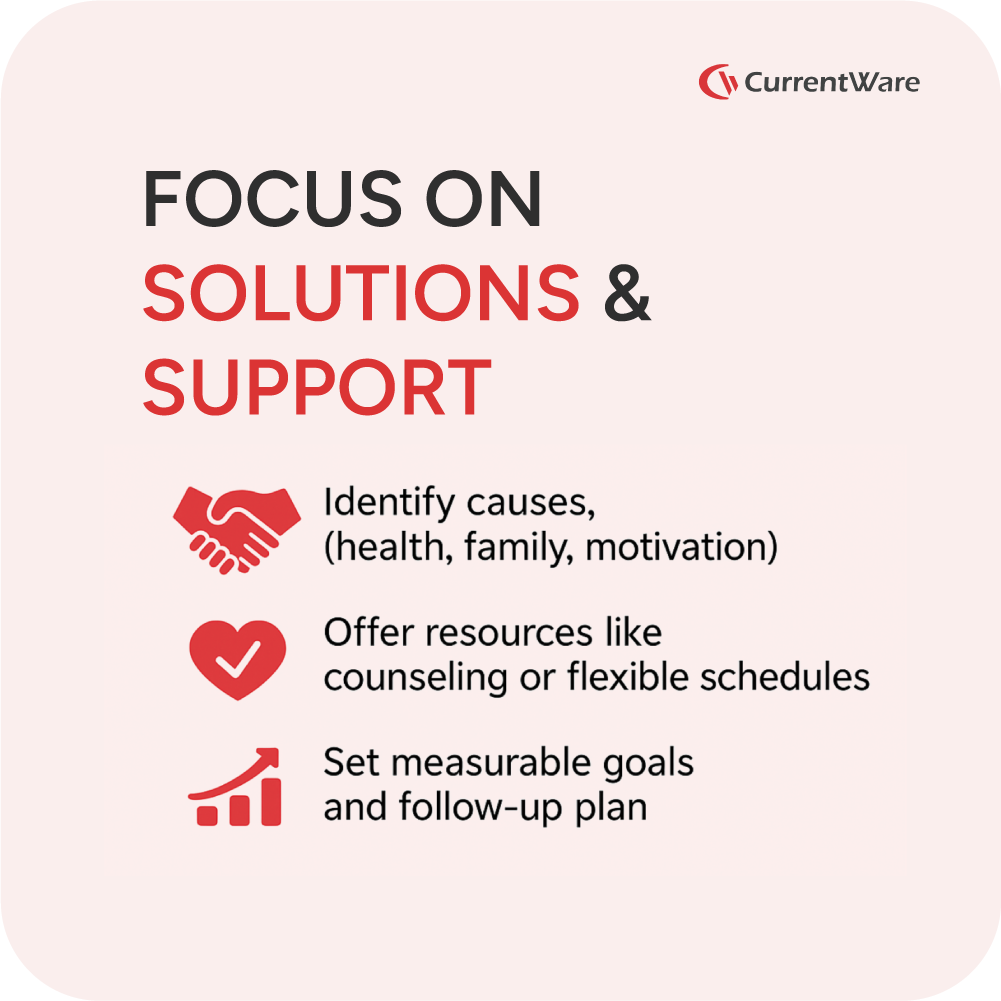
Approaching the conversation with empathy is essential when addressing excessive absenteeism. Begin by expressing your genuine concern for the employee’s well-being, rather than immediately focusing on the problem or its impact. Acknowledge that there may be underlying personal or health-related reasons behind their absences and invite them to share any challenges they may be facing.
Demonstrate active listening by giving them your full attention and responding thoughtfully, which fosters trust and openness. By creating a safe and supportive environment, you encourage honest dialogue and signal your commitment to helping the employee find solutions, rather than simply issuing warnings or discipline. This approach not only helps maintain a positive work environment but can also lead to better long-term outcomes for both the employee and the organization.
Discuss the Impact of Excessive Absenteeism

When discussing the impact of excessive absenteeism, it is important to clearly and factually explain how frequent absences affect the broader workplace. Chronic absenteeism not only results in direct financial costs, it also leads to significant productivity losses.
When employees are excessively absent their colleagues often need to take on extra responsibilities to compensate, increasing stress and the risk of burnout, which in turn can reduce overall team morale and efficiency. In addition, project deadlines may be missed, work quality may decline due to overloaded staff, and ongoing disruptions can negatively alter the team dynamic and workplace culture.
Set Clear Expectations Moving Forward
Reiterate the expectations going forward and explain consequences for continued absenteeism, referencing your employee attendance policy. Consider if a performance improvement plan or reasonable accommodations are appropriate measures for addressing excessive absenteeism.
Document the Conversation

After discussing excessive absenteeism with your employee, be certain to document that the conversation occurred. Write down a summary of what was discussed, agreed upon, and any next steps will ensure the employee understands what’s expected and what will happen if attendance doesn’t improve.
Follow Up and Monitor Progress
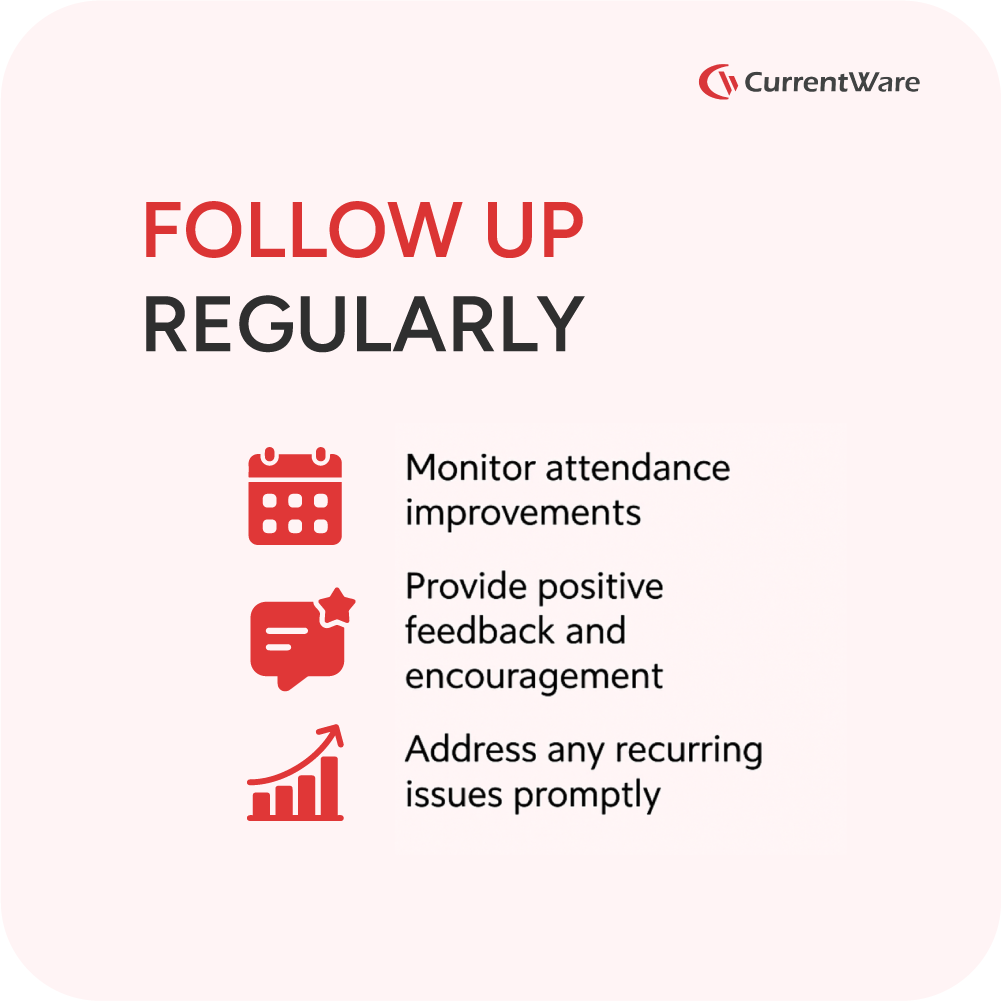
Follow up and monitor progress to ensure that the conversation’s goals are being met. To track when employees start work each day, consider tools such CurrentWare’s office attendance tracking software. CurrentWare provides insights into employee working locations, remote vs office productivity trends, and absenteeism.
Frequently Asked Questions
Conclusion
Addressing excessive absenteeism with an employee can be a challenging but necessary part of effective management. By preparing thoroughly, approaching the conversation with empathy, and clearly explaining the impact of their absences, you can create a respectful and constructive dialogue.
Remember, the goal is not only to uphold company policies but also to understand and support your employee in overcoming obstacles that may be affecting their attendance. With open communication and a collaborative attitude, you can help the employee get back on track while fostering trust and maintaining a positive, productive work environment. Taking a thoughtful, people-centered approach benefits both your team and your organization as a whole.
